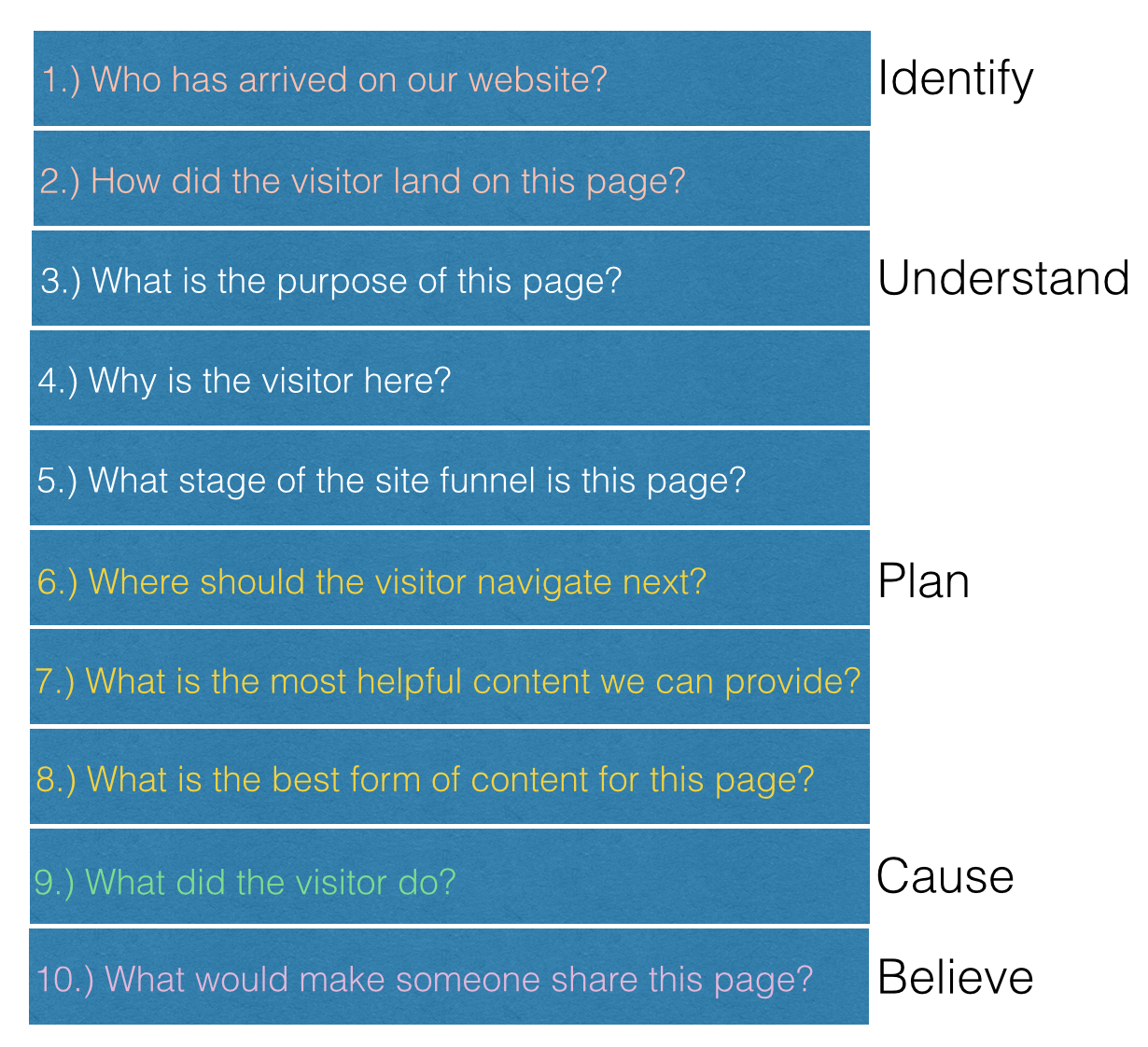Topics:
Marketing StrategyJoin 40,000+ sales and marketing pros who receive our weekly newsletter.
Get the most relevant, actionable digital sales and marketing insights you need to make smarter decisions faster... all in under five minutes.
 During most web design/redesign projects, the goal is to increase engagement.
During most web design/redesign projects, the goal is to increase engagement.
Usually, designers turn to direct response marketing tactics to test different fonts, wording, adding a video, inserting imagery that conveys urgency to users, etc.
They test out whatever they can to achieve more engagement, but from a business point of view, they’re forgetting one very important factor -- conversions.
It’s no secret that your website is an integral part of your Inbound success, but sometimes designers still neglect this connection when creating something new.
Transforming your team’s design process to operate under an Inbound mindset can have a huge impact on your engagement and conversion rates by creating an intuitive user experience that will reflect your professionalism, while delivering what people want and need in a visually striking manner.
The Goal of Designing for Inbound Marketing
Now there’s no question that increasing engagement is a benefit of Inbound Marketing, but it’s not the ultimate goal of the methodology.
It’s usually an Inbound Marketer’s goal to generate conversions (leads) via the company website, but it’s even better when those leads, in turn, share your website with others because of how helpful it is. (After all, even in Inbound, nothing beats word-of-mouth (WOM) marketing.)
Just because people can find your website, doesn’t mean they’ll love it and want to share it. It’s like having a great product, but a terrible package. As a marketer and designer, you have to combine design and Inbound Marketing to form the catalyst for your brand to attract conversions and shares.
So how is this done?
Here are the 10 Steps to Designing a Website for Inbound Success:
When thinking about designing for an Inbound site, we can break the process down into 10 steps, across 5 categories.

Identify (Steps 1-2)
Identifying the who and how is the first step in thinking about Inbound web design. Keep in mind the expectations of your target persona as you design each page of your site.
In addition, find out how users are arriving on your page. Are they arriving via social media, organic traffic, PPC, PR, blog articles, email, etc.? Should users see different content depending on where they’re coming from on the web?
By identifying the who and how, you’ll be more mindful of ensuring the warmest welcome possible to your new website guests.
Understand (Steps 3-5)
Now that you know who is in your house and how they got in, you need to understand why they came to the page in the first place. Someone that arrives on your pricing page vs. your homepage has a different mindset upon arrival.
For each page on your site, have your team justify the purpose of the page’s existence.
Why do you have a pricing page? The obvious answer is “for prospects to learn about our pricing,” but go deeper. What other information do people want/need to see? A video explaining your pricing vs. other options? A history of your industry? A link to a report on the state of your industry featuring testimonials from customers who willingly pay for your service/product?
Once you identify what additional information people need/want, those are the catalysts that will engage them further. If you’re not convinced, head to your pricing page right now and spend 60 seconds going through it. I bet 9/10 of you can find at least one Inbound concept that’s missing.
The last part of the “understand” category is to think about what stage of your conversion funnel each page represents on your website.
- Top of the funnel pages - The goal with these pages is to lead users to middle or bottom of the funnel pages. Map out the best way(s) to move people from TOFU to MOFU, and BOFU.
- Middle of the funnel pages - The goal with these pages is to give people the content needed to move on to bottom of the funnel pages. Again, map out the best way(s) to move people from MOFU to BOFU.
- Bottom of the funnel pages - The goal of these pages is to ensure users convert. When a user arrives on a bottom of the funnel page, make sure you’ve done everything in your power during the top and middle of the funnel stage pages to prove your worth.
Below is a list of 24 different types of pages that we house on Crayon. While not all are applicable to everyone, you can use these as a checklist to begin mapping out where your pages land in the sales funnel.
Plan (Steps 6-8)
To begin this section, a visual will work best:

You need to think a step ahead, if not a few steps ahead, of your visitors.
Ultimately, the goal is to get them to the purchase page (BOFU) and converted. While this graphic is simplistic in nature, it’s effective in helping you think about and understand traffic flow. Think of your website pages as a map. There is an end that you want people to arrive at and it’s up to you to plan the paths accordingly.
To identify the most helpful content you can provide, there are a few exercises that can help:
- Test engagement rates of various content via marketing automation.
- Talk to customers about your content. Ask them what specific content got them to move further down your funnel.
- Test various content types on your pages besides written, such as video.
- Think about how everything on your pages is presented and look for inspiration for new pages and ideas. (This is where we at Crayon come in. We aim to bring marketers and designers the very best in design inspiration, absolutely free!)

With over 13 million designs on Crayon, what you can do to drastically improve your design output as a company is to build Collections of every page type on your website.
For instance, here’s a collection comprised solely of “about us” pages within the Education industry. Now you can work with your team to save designs that are inspiring for every page type.

But enough pitching; back to business.
Cause (step 9)
Measure, measure, measure, and optimize towards the content that moves people through the funnel.
Nothing new here, but it’s included because plenty of marketing programs still aren’t set up with proper tracking. Before you embark on any design testing, you need to be 100% sure that you can accurately measure user activity so that you’re not left guessing what happened (platforms like HubSpot, Unbounce, and Optimizely are great for this.)
In addition to measuring, you need to be rapidly testing new designs. There’s only one person/team that can increase user engagement on your website. It’s not going to increase on its own.
Believe (Step 10)
Earlier in the article I mentioned that people share pages and experiences that they love. It is somewhat rare, but it happens, and when it does, there are huge benefits.
The best way to position yourself for success here is to go through all of the above steps 1-9, and then sincerely ask yourself, a few customers, prospects, and your team, if the page is compelling enough for them to share with their network.
You’ll know you’re ready to launch new pages when you believe that everyone is telling you the truth and you’re happy with their answers.
Key Takeaway
Web design for Inbound Marketing is the best way to increase user engagement and conversions on your website. While it is a big undertaking for your team to accept, the benefits are worth the effort.
Remember back a few years when you had to “sell” the concept of Inbound Marketing to your boss?
Just like with Inbound, in web design, it is the ideas and the quality of your content that will get people to move down the sales funnel. What’s great about web design is that you can test small design/content change iterations just as fast as traditional Inbound Marketing tactics like blog posts and eBooks.
Imagine what would happen if your website conversion increased by 20%. Would that be beneficial to you and your team? What about 50% or more? Now is the time to get your team cranking, and with the Inbound Methodology in mind when designing, you’ll be glad you did.
Most mornings I usually spend a minute or two scrolling through LinkedIn either reading news updates or searching for candidates. When I do, it’s fairly common for me to see the term “Inbound Marketer” on people’s profiles. In the not too distant future, I wouldn’t be surprised to start seeing “Inbound Designer.”
Dan Slagen is currently the VP of Marketing at Crayon, a free insights engine designed to be a new way for marketers and designers to get inspired and spark great ideas about what to build. To learn more about Dan, Crayon, and its services, visit their website here.


Register for IMPACT Live in Hartford CT, October 14-16!

